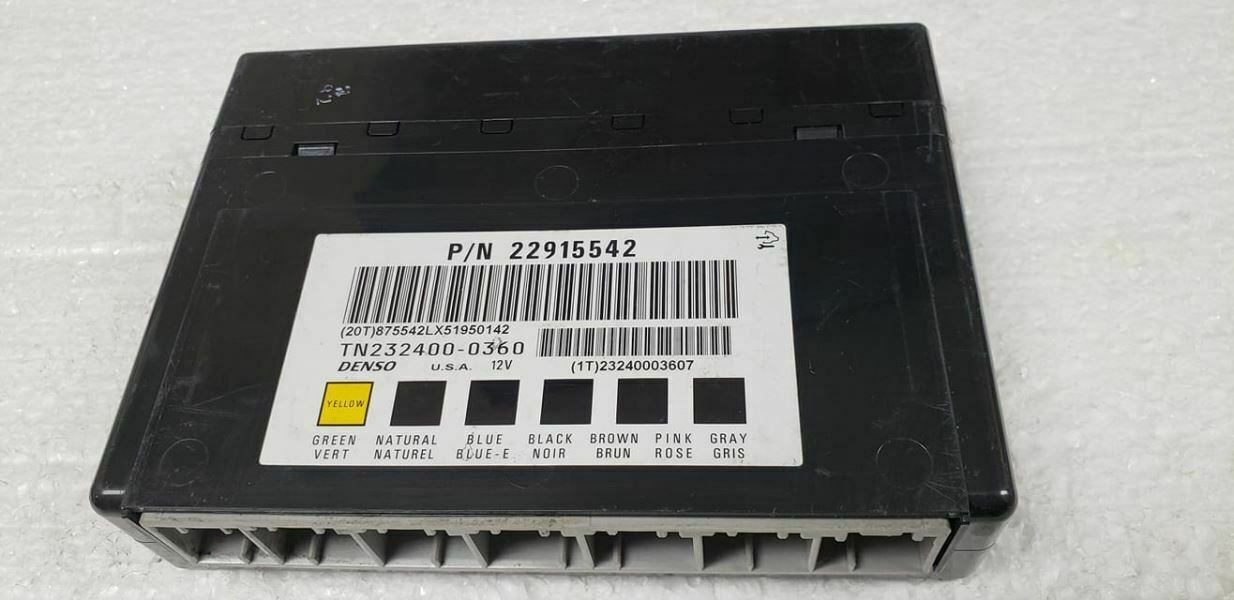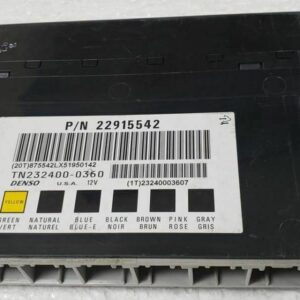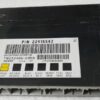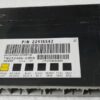Are you tired of dealing with baffling electrical issues in your GM vehicle? One moment the radio works, the next it doesn’t. Your power windows have a mind of their own, and mysterious warning lights keep appearing on your dash. As a technician with over two decades of experience, I’ve seen these exact frustrations countless times. The culprit is often a failing Body Control Module (BCM)—the central command center for your vehicle’s body electronics.
This isn’t just a replacement part; it’s a complete, ready-to-install solution. We take the hassle and high cost of dealership visits out of the equation. Simply provide your vehicle’s VIN at checkout, and our experts will program this GM Body Control Module with the latest factory software specific to your car, truck, or van. It arrives at your door ready for installation, saving you time, money, and the headache of scheduling a programming appointment.
From the Diagnostic Bay: The Case of the Confused Traverse
A customer brought in a 2015 Chevy Traverse, complaining of a dead battery every morning and interior lights that would flicker randomly, even when the vehicle was off. They had already replaced the battery twice. My initial scan showed a dozen communication codes (U-codes) pointing to a network-wide issue. Instead of chasing ghosts, I went straight to the BCM. By monitoring power draw at the fuse box, I isolated a circuit controlled by the BCM that was staying active overnight, causing a parasitic drain. Replacing the faulty GM Body Control Module with a correctly programmed unit immediately solved the battery drain, the flickering lights, and cleared all the communication faults. It’s a classic failure mode I’ve diagnosed hundreds of times.
Common Signs of a Failing BCM
If your vehicle is exhibiting any of these symptoms, a faulty BCM is the likely cause. Replacing it can restore proper function and reliability.
- ✔ Erratic or non-functional power windows, door locks, and interior/exterior lights.
- ✔ The security or anti-theft system prevents the car from starting.
- ✔ Dashboard warning lights (like ABS, Airbag, or Check Engine) illuminate for no apparent reason.
- ✔ Horn, windshield wipers, or radio operate intermittently or not at all.
- ✔ Communication error codes (e.g., U0140, U0155) stored in the system.
- ✔ Unexplained parasitic battery drain that kills your battery overnight.
Your Straightforward BCM Installation Guide
Installing your new BCM is a manageable job for a confident DIYer. While the exact location varies (typically behind the driver’s side lower dash or center dash), the general process is consistent.
- Safety First: Always disconnect the negative terminal from your vehicle’s battery before beginning any electrical work. Wait a few minutes for the system capacitors to discharge.
- Locate the BCM: Depending on your model, you may need to remove a lower dash panel or glove box to access the module. It’s a black box with multiple large electrical connectors.
- Disconnect and Remove: Carefully unplug all electrical connectors. They have locking tabs that need to be depressed. Once disconnected, unbolt the old BCM from its mounting bracket.
- Install the New Module: Bolt your new, pre-programmed BCM into place. Firmly reconnect all electrical connectors, ensuring each one clicks securely into position.
- Reconnect Power: Re-attach the negative battery terminal.
- Perform Post-Install Checks: Start the vehicle and test all body functions—lights, locks, windows, radio, etc. Note that some vehicles may require additional relearn procedures as detailed below.
Important Post-Installation Information
While this module is delivered programmed for your vehicle, certain security and sensor systems may need to be re-synchronized after installation. This is a normal part of the process.
- Airbag System Sync: If the airbag warning light is on after installation, a ‘Setup SDM Primary Key in BCM’ procedure must be done with a professional scan tool. This is only necessary if the light appears.
- Brake Pedal Position Relearn: On some models, a brake pedal position sensor recalibration might be needed to ensure correct brake light and stability control operation.
Disclaimer: Vehicle systems vary. We always recommend consulting a factory service manual or a qualified professional if you are unsure about any step.
Verified Vehicle Compatibility
This module is a direct replacement for part numbers 22915542 and 22820314 and is guaranteed to fit the following GM models:
- ✔ 2013-2016 Acadia
- ✔ 2017 Acadia (Limited, VIN J)
- ✔ 2013-2015 Captiva Sport
- ✔ 2014-2015 CTS (Coupe)
- ✔ 2014 CTS (Sedan, SW, V-Series)
- ✔ 2013-2017 Enclave
- ✔ 2013-2018 Express Van (1500/2500/3500)
- ✔ 2013 Impala
- ✔ 2014-2016 Impala (Limited, VIN W)
- ✔ 2013-2018 Savana Van (1500/2500/3500)
- ✔ 2013-2017 Traverse
Frequently Asked Questions
How does the programming process work?
After you place your order, you will need to provide us with your 17-digit Vehicle Identification Number (VIN). Our technicians use the VIN to load the latest, most stable GM-certified software for your specific vehicle onto the BCM before shipping it.
Do I need to send my old BCM back?
No. There is absolutely no core charge for this part. You can keep your original module.
Is this a true plug-and-play solution?
For most vehicle functions, yes. Because it arrives pre-programmed, it will restore control over lights, windows, and locks upon installation. However, as noted, some models may require a simple relearn procedure for the airbag or brake pedal sensor, which can be done with a compatible high-level scan tool.
Will this fix my ‘Service Theft Deterrent System’ message?
A faulty BCM is a very common cause of this message and related no-start conditions. By installing a BCM programmed to your VIN, the security information is correctly matched, which typically resolves this issue.
What tools are required for the post-installation procedures?
The Airbag System Sync and Brake Pedal Position Relearn procedures require a bi-directional diagnostic scan tool, such as a GM Tech 2, MDI, or a high-end professional aftermarket scanner. Most local repair shops have this equipment.



